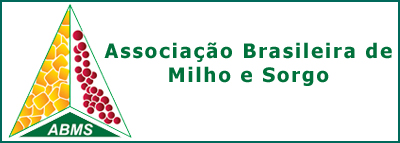PERÍODOS DE DESSECAÇÃO DO CAPIM RUZIZIENSIS E SEUS EFEITOS NO DESENVOLVIMENTO E PRODUTIVIDADE DO MILHO
DOI:
https://doi.org/10.18512/1980-6477/rbms.v17n3p400-407Keywords:
Brachiaria ruziziensis, Urochloa ruziziensis, cobertura vegetal, plantio direto, glyphosateAbstract
RESUMO – Considerando que há relatos de possível intoxicação de milho por causa da dessecação de capim braquiária, o objetivo deste estudo foi determinar o melhor período para semear o milho ‘Yield Gard DKB 390 YC’ após a dessecação da cobertura. O delineamento experimental foi inteiramente casualizado, com quatro repetições. Os tratamentos consistiram em seis períodos de dessecação do capim ruziziensis (25, 20, 15, 10, 05 e 0 dias antes da semeadura do milho) e uma testemunha sem cobertura. As dessecações foram feitas em pleno florescimento do capim ruziziensis com glyphosate a 1,44 kg ha-1. Foram avaliadas as plantas de milho aos 30 e 50 dias após a semeadura (DAS) quanto à altura, área foliar, massa seca de folhas e caule. Aos 150 DAS, foi avaliada a altura de plantas e a inserção da espiga, diâmetro e comprimento da espiga, massa de 100 grãos e produtividade de grãos. A dessecação do capim ruziziensis no mesmo dia da semeadura do milho reduziu a altura das plantas, a altura de inserção da espiga, o diâmetro da espiga e a produtividade de grãos. A melhor época para a semeadura do milho ‘Yield Gard DKB 390 YC’ após a dessecação de capim ruziziensis com glyphosate foi aos 25 dias após a dessecação.
Palavras-chaves: Brachiaria ruziziensis, Urochloa ruziziensis, cobertura vegetal, plantio direto, glyphosate.
EFFECTS OF DESICCATION PERIODS OF RUZIZIENSIS GRASS ON GROWTH AND YIELD OF MAIZE
ABSTRACT - Considering the possible occurrence of maize intoxication due to the desiccation of ruziziensis grass, the objective of this study was to evaluate the best period for sowing ‘Yield Gard DKB 390 YC’ in the no-tillage system. The experimental design was completely randomized with four replications. The treatments consisted of six periods of desiccation of ruziziensis grass (25, 20, 15, 10, 05 and 0 days before sowing maize) and one control without cover. The desiccations were done at full bloom of the ruziziensis grass with glyphosate at 1.44 kg ha-1. The maize plants were evaluated at 30 and 50 days after sowing (DAS) for height, leaf area, leaf and stem dry biomass. At 150 DAS, plant height and cob insertion, cob diameter and length, 100 grain mass and yield were evaluated. The desiccation of ruziziensis grass in the same day of maize sowing caused reduction in plant height, cob insertion height, cob diameter and yield. The best time for sowing ‘Yield Gard DKB 390 YC’ was 25 days after desiccation of ruziziensis grass with glyphosate.
Keywords: Brachiaria ruziziensis, Urochloa ruziziensis, cover crop, no-tillage, glyphosate.
Downloads
Published
How to Cite
Issue
Section
License
Authors retain copyright and grant the journal right of first publication with the work simultaneously licensed under the Creative Commons Attribution License that allows the sharing of work and recognition of the work of authorship and initial publication in this journal.
Authors are able to take on additional contracts separately for non-exclusive distribution of the version of the paper published in this journal (eg, in an institutional repository or publish as a book), with acknowledgment of its initial publication in this journal.
Authors are permitted and encouraged to post their work online (eg, in institutional repositories or on their website) at any point before or during the editorial process, as this may leadto productive exchanges, as well as increase the impact and citation of published work.



